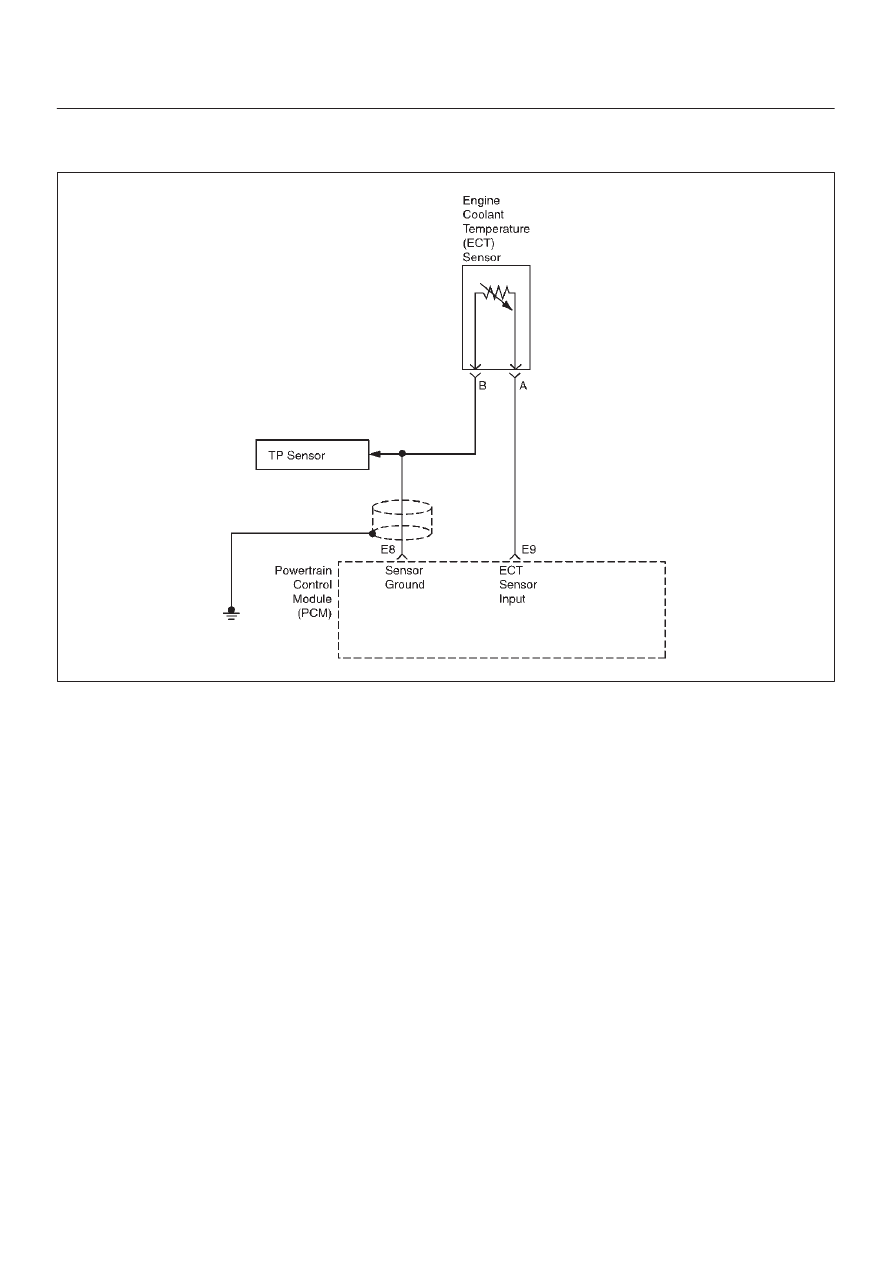Content .. 1311 1312 1313 1314 ..
Isuzu Amigo / Axiom / Trooper / Rodeo / VehiCross. Manual - part 1313

6E1–328
RODEO Y22SE 2.2L ENGINE DRIVEABILITY AND EMISSION
DIAGNOSTIC TROUBLE CODE (DTC) P1115 ENGINE COOLANT
TEMPERATURE (ECT) SENSOR CIRCUIT INTERMITTENT HIGH VOLTAGE
060R100028
Circuit Description
The engine coolant temperature (ECT) sensor is a
thermistor mounted in the engine coolant stream. The
powertrain control module (PCM) applies a voltage
(about 5.0 volts) through a pull–up resistor to the ECT
signal circuit. When the engine coolant is cold, the sensor
(thermistor) resistance is high, therefore the PCM will
measure a high signal voltage. As the engine coolant
warms, the sensor resistance becomes less, and the
ECT signal voltage measured at the PCM drops. With a
fully warmed up engine, the ECT signal voltage should
measure about 1.5 to 2.0 volts. If the PCM detects an
ECT signal that is intermittently above the range of the
ECT sensor, Diagnostic Trouble Code P1115 will set.
Diagnostic Trouble Code P1115 is a type D code.
Conditions for Setting the DTC
D
Engine run time longer than 180 seconds.
D
The ECT sensor signal is intermittently greater than
–39
°
C (–38
°
F) (4.94 volts) for a total of 10 seconds
over a 100–second period.
The conditions are met for 20 test failures within 200 test
samples.
Action Taken When the DTC Sets
D
The PCM will not illuminate the malfunction indicator
lamp (MIL).
D
The PCM will store conditions which were present
when the Diagnostic Trouble Code set as Failure
Records data only. This information will not be stored
as Freeze Frame data.
Conditions for Clearing the DTC
D
A history Diagnostic Trouble Code P1115 will clear
after 40 consecutive warm–up cycles have occurred
without a fault.
D
Diagnostic Trouble Code P1115 can be cleared by
using the Scan Tool’s ”Clear Info” function.
Diagnostic Aids
Check for the following conditions:
D
Poor connection at PCM – Inspect harness connectors
for backed–out terminals, improper mating, broken
locks, improperly formed or damaged terminals, and
poor terminal–to–wire connection.
D
Damaged harness – Inspect the wiring harness for
damage; shorts to ground, shorts to battery positive,
and open circuits. If the harness appears to be OK,
observe the ECT display on the Tech 2 while moving
connectors and wiring harnesses related to the ECT
sensor. A change in the ECT display will indicate the
location of the fault.
Reviewing the Failure Records vehicle mileage since the
diagnostic test last failed may help determine how often
the condition that caused the Diagnostic Trouble Code to
be set occurs. This may assist in diagnosing the
condition.